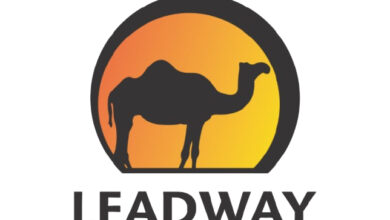Redefining Sustainability In Life and Health

By Daisy Ning, Head Life & Health Re APAC ex. China
Sustainability has become a significant focus in recent years, with many firms — including Swiss Re —aiming to reach net zero targets in their operations, investments and, in the case of re/insurers, underwriting portfolios.
In addition to these initiatives, at Swiss Re, we believe sustainability should be understood and applied more broadly in the re/insurance context. To us, sustainability directly aligns with the scope of what we call the ‘3As’ of life and health (L&H) insurance: accessibility (the ease of acquiring coverage), availability (whether suitable plans and products exist to cover the full range of L&H needs), and affordability (whether products and plans are priced fairly and within consumers’ means).
We advocate defining sustainability in this broader way because the 3As dictate whether hundreds of millions of people worldwide have coverage for shocks such as critical illness or death of the breadwinner in the family. As I’ve noted before, this is particularly true for Asia-Pacific (APAC), where, as the Swiss Re Institute (SRI) has found, the 3As are the main factors influencing insurance inclusivity.
This is why the re/insurance industry has a unique role to play in enhancing the 3As. In pursuing this goal, we can formulate strategies that enable us to:
- Manage risk, improve adaptability, and explore opportunities regardless of market conditions.
- Assess how ongoing and emerging trends apply to our industry and the value we deliver to clients—and adjust our business models where necessary.
- Consistently enhance our value to clients by adapting insurance solutions to be more relevant to today’s workplace and healthcare realities—for example, by focusing on recovery instead of proving disability.
Based on our experience, I’d like to share some specific practices that can help us drive the 3As, while serving these strategies and the industry’s overall health and dynamism.
Driving affordability through product innovation
Let’s start with the critical issue of affordability. Swiss Re’s vision is to make the world more resilient, and L&H re/insurance plays a key role in protecting societies from the financial fallout of events like the loss of a household breadwinner. Our industry, though, is falling short. The global protection gap rose to USD 406 billion in premium equivalent terms globally in 2022, up by 1.5% from 2021, and USD 49 billion more than in 2012.
APAC struggles with life and health inclusion, as well as mortality resilience—a measure of how financially protected families are should a breadwinner die. SRI research shows an overwhelming majority of the population in markets such as India, Vietnam, and Indonesia remain chronically unprotected.
Research from BCG also underlines that regional life and health insurance participation is relatively low, accounting for under 20% of total healthcare spending in most APAC markets, even as spending on healthcare itself in Asia continues to outstrip both GDP growth and global trends.
So how can we advance progress?
First and foremost, by leveraging connectivity and digitalisation to make products more affordable for a wider range of emerging market consumers. Microinsurance, for example, puts insurance within easier reach of marginalised communities. Through automation of aspects of the insurance value chain like marketing, distribution, and claims management, targeted protection can be delivered at speed and scale where it’s needed most.
Another example is embedded health insurance, where insurers collaborate with healthcare providers to create holistic digital ecosystems that seamlessly bundle health, fitness, wealth, financial, and insurance services tailored to the customer profile. This can help achieve economies of scale, while also enhancing engagement and expanding distribution.
How data-driven decision-making can serve availability
Our second major priority is availability, and here the use of data is crucial. Insurers can leverage big data and advanced analytics to uncover valuable insights into market trends, customer behaviour and critical risk factors, creating products based on this knowledge that address emerging needs and build societal resilience in the process.
Data-driven approaches can, for example, enable L&H insurers to predict lifespans and anticipate medical expenses with greater precision, paving the way for more sophisticated products reflecting better understanding of the consumer, and allowing for strategic pricing.
Deploying AI-powered tools further enhances predictive modelling, allowing life insurers to refine the underwriting process and provide comprehensive reviews of health risks that can also prove invaluable for policyholders.
The ability to leverage data helps in other ways, by making determining premiums more transparent and accurate, and claims management more efficient. Swiss Re’s partnership with Japanese data services provider JMDC, for instance, shows how assessing wearables data can enable dynamic assessment of modifiable risk factors like sleep and exercise.
Another promising area is digital health underwriting, where insurers use electronic health records—increasingly adopted across APAC—to assess claims more precisely and conduct underwriting assessments more efficiently. In this way, new policies can be agreed and claims processed faster.
This puts customers on a sounder financial footing and builds loyalty for the long term.
Insurers that judiciously use the larger quantity and higher quality of data that new technologies like AI offer are also more likely to stay relevant in a dynamic market landscape, by developing products and services that suit customers and cover a wider range of L&H needs.
Leveraging new distribution channels to enhance accessibility
When it comes to the third ‘A’—accessibility—the possibilities are almost limitless. The rise of online platforms and aggregators means insurers must adapt to ensure they meet their customers where they are. This creates the greatest potential to build consumer resilience against health and financial risks.
Accessibility means exploring partnerships with fintechs and other digital platforms—as, for example, Swiss Re has done with Wysa Assure, an AI-based mental health support app. This partnership integrates our risk expertise and proprietary scoring system with Wysa’s AI-powered mental health solutions. Australia was first to benefit from this ground-breaking collaboration, with MLC Life Insurance taking the lead as the first insurer to pilot the solution.
In China, through a collaboration with payment platform Alipay, we’ve extended critical illness coverage to smaller cities and rural areas where traditional distribution networks have long been lacking.
Especially in APAC, partnering with digital platforms amounts to pushing on an open door: Our research shows customers are highly open to buying insurance online. Customer use of various digital health management touchpoints has skyrocketed since the COVID-19 pandemic.
Building alliances with online platforms, aggregators, fintechs, and other digital players will increase the reach of the industry’s products and services. In this way, we can provide a more seamless customer experience and encourage greater adoption.
Advancing insurers’ unique contribution to financial inclusion
Our experiences demonstrate how a range of tools and practices are emerging that empower our industry to support sustainability beyond environmental considerations and ensure the ‘3As’ of L&H insurance take root across our region. By focusing on continuous and responsive product development, data-driven decision-making, and the promise of new distribution channels, we can remain fit for purpose, align with consumer needs, and bolster the resilience of our societies.
After all, to be sustainable, communities need to be better protected against catastrophic health and financial events—a cause to which we can contribute.
Daisy is an experienced actuarial and senior leader in the Life & Health re/insurance industry. She started her career at Swiss Re in 1999. While she has spent a large part of her professional life with Swiss Re, she had also taken on various leadership positions within the industry.
Source: Asian Insurance Review





